Beginner’s Guide to Yoga for Flexibility: Unlock Your Body’s True Potential
Feeling stiff, sluggish, or just plain inflexible? You’re not alone. In today’s screen-heavy, movement-light world, many of us have lost the natural flexibility we had as kids. The good news? You can get it back and yoga is the key.
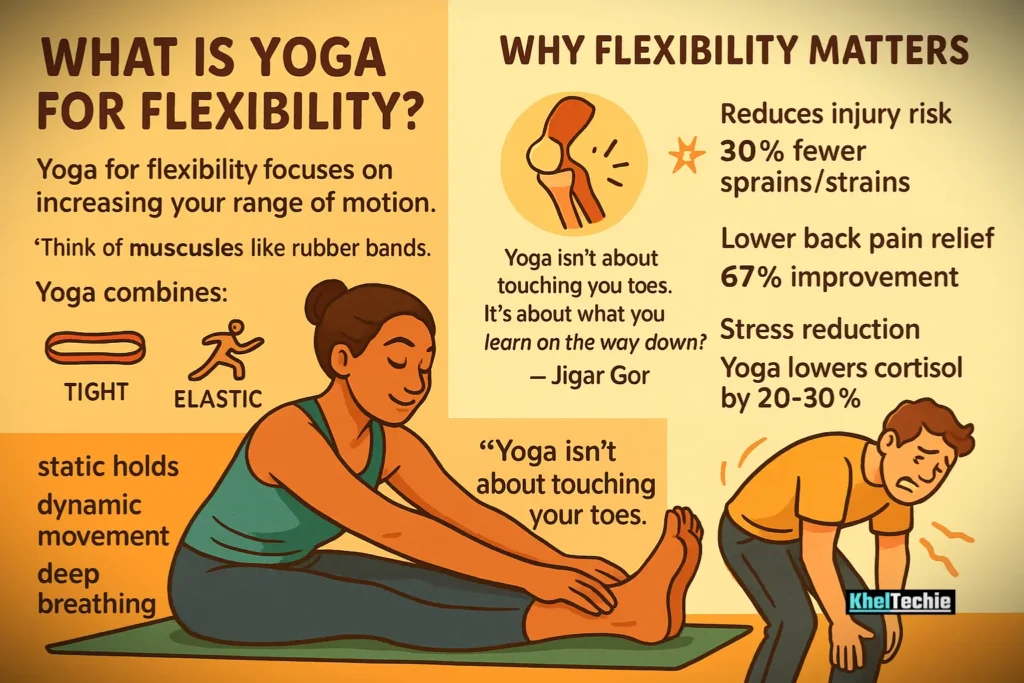
What is Yoga for Flexibility?
Yoga for flexibility is exactly what it sounds like, a style of yoga practice focused on increasing your range of motion. Think of your muscles like rubber bands. If you don’t stretch them, they get tight and brittle. But with consistent stretching, they regain elasticity and resilience.
Yoga combines:
- Static holds (like in Yin yoga),
- Dynamic movement (like in Vinyasa),
- Deep breathing (to release tension and support mobility).
And don’t worry, you don’t have to be flexible to start. In fact, yoga meets you exactly where you are.
“Yoga isn’t about touching your toes. It’s about what you learn on the way down.” – Jigar Gor
Why Flexibility Matters
Let’s get real. Flexibility isn’t just for dancers or yogis on Instagram. It’s essential for daily living. Here’s why:
The Science Says:
- Reduces injury risk by improving joint mobility (Harvard Health)
- Boosts circulation and muscle recovery post-workout.
- Supports posture by releasing tight muscles in the hips, hamstrings, and back.
📊 Quick Stats:
| Benefit | What the Research Shows |
|---|---|
| Injury Reduction | 30% fewer sprains/strains with regular stretching |
| Lower Back Pain Relief | 67% improvement with yoga-based stretching (NIH) |
| Stress Reduction | Yoga lowers cortisol by 20–30% |
Real-Life Scenario:
You bend over to pick something up. Instead of gracefully reaching down, you groan, wobble, and feel your hamstrings scream. Flexibility isn’t vanity, it’s freedom of movement.
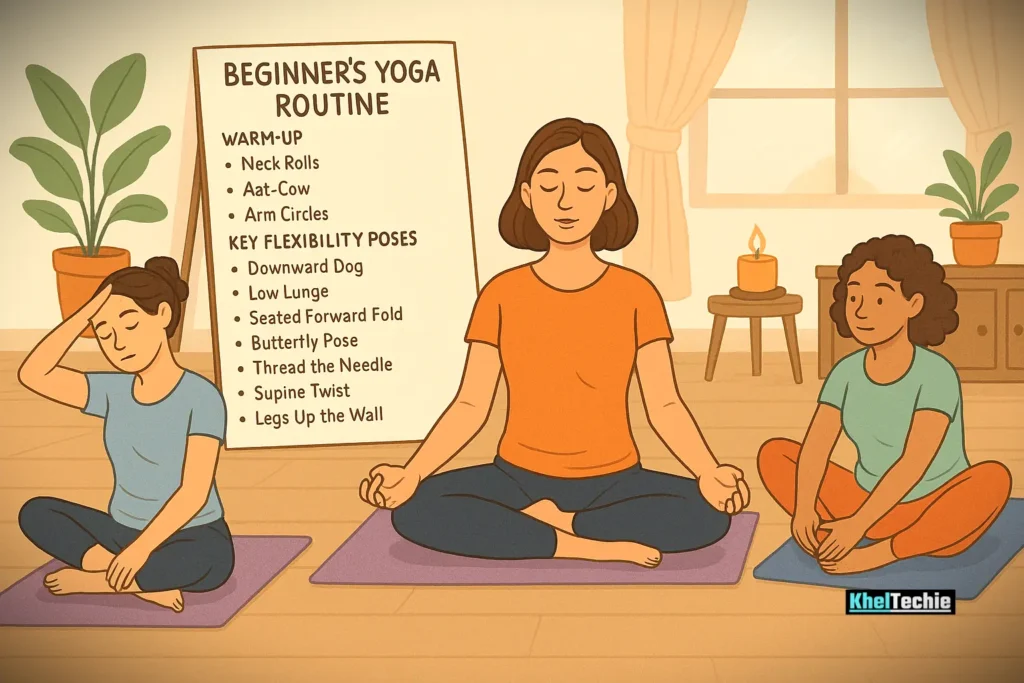
Step-by-Step Beginner’s Yoga Routine for Flexibility
Let’s cut through the fluff. If you’re just starting out, here’s a beginner-friendly yoga sequence to improve flexibility in 20–30 minutes daily.
Step 1: Warm-Up (5 min)
Start with light dynamic stretches:
- Neck Rolls
- Cat-Cow Pose (Marjaryasana-Bitilasana)
- Arm Circles
Can Play soft music, light a candle, and create a calm space.
Step 2: Key Flexibility Poses (20–25 min)
| Pose | Targets | How Long |
|---|---|---|
| Downward Dog | Hamstrings, calves, shoulders | 1 min |
| Low Lunge (Anjaneyasana) | Hip flexors, quads | 1 min/side |
| Seated Forward Fold | Hamstrings, spine | 1 min |
| Butterfly Pose | Inner thighs, hips | 1–2 min |
| Thread the Needle | Shoulders, upper back | 1 min/side |
| Supine Twist | Spine, glutes | 1 min/side |
| Legs Up the Wall | Calves, lower back | 2–3 min |
Step 3: Breathing & Cool Down (5 min)
- Sit in Easy Pose (Sukhasana)
- Inhale for 4 counts, hold 4, exhale 6
- Repeat for 5–6 cycles
Common Mistakes Beginners Make and How to Avoid Them
1. Trying to Go Too Deep Too Fast
Flexibility takes time. Don’t push yourself into a split in week one. You could tear a muscle or injure a joint.
Experts at Mayo Clinic warn that overstretching can actually backfire and cause instability.
2. Holding Your Breath
If you’re turning blue in a pose, you’re doing it wrong. Breath is your best friend in yoga.
3. Inconsistent Practice
3–4 times per week yields results. Once a week won’t cut it.
4. Skipping Warm-Ups
Cold muscles are tight muscles. Always warm up.
5. Comparing Yourself to Others
Everyone’s flexibility journey is unique. Focus on progress, not perfection.
Final Thoughts: It’s Your Journey, Not a Race
If you’re a beginner looking to unlock flexibility through yoga, remember this: every expert was once a beginner. The key is to start and keep showing up. You don’t need to be bendy to begin, but you’ll be surprised where consistent practice takes you.
“Inhale the future, Exhale the past.”
✅ Action Step:
Start with the sequence above 3 times a week. Track your progress. Celebrate small wins. And don’t forget to breathe!
FAQs
Do I need to be flexible to start yoga?
Not at all. Yoga helps you become flexible, not the other way around. Start where you are.
How long until I see results?
With consistency (3–4 times/week), many beginners report noticeable gains in 4–6 weeks.
Is yoga enough for flexibility, or should I stretch separately?
Yoga includes both active and passive stretching — so it’s a complete flexibility practice.
Which style of yoga is best for flexibility?
Yin Yoga – slow and deep.
Hatha Yoga – gentle and beginner-friendly.
Vinyasa Flow – great if you enjoy movement with breath.
Can I hurt myself doing yoga?
Yes, if you force poses or skip alignment. Listen to your body. If it hurts, back off.
Is morning or evening better for yoga?
Both work. Mornings energize, evenings unwind. Choose what fits your schedule.
How long should I hold each pose?
Start with 30–60 seconds. Gradually build up to 2–3 minutes for deeper stretches.
Should I eat before yoga?
Practice on a light stomach. A banana or smoothie 60 minutes before is ideal.
Can older adults do yoga for flexibility?
Absolutely! Just modify poses and use props like blocks or straps.

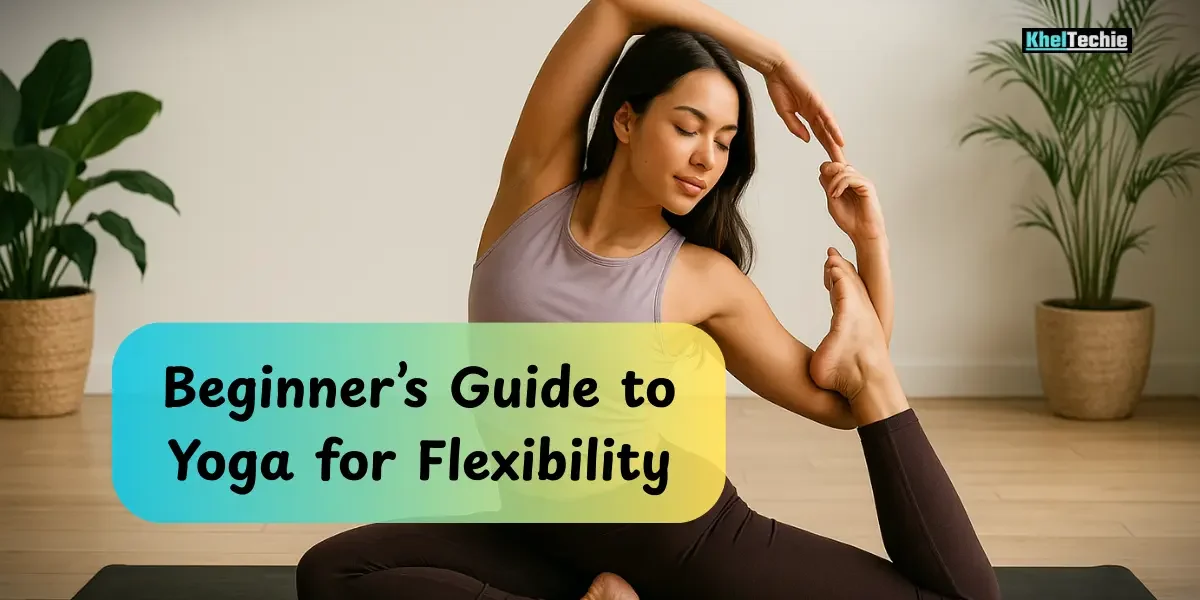

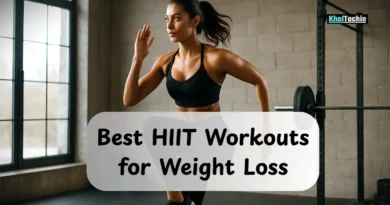
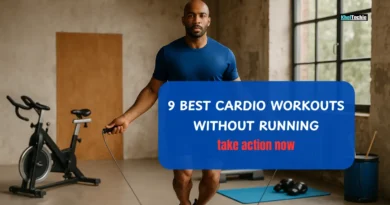
Pingback: Smart Yoga Mats: Are They Worth It? 2025 Edition